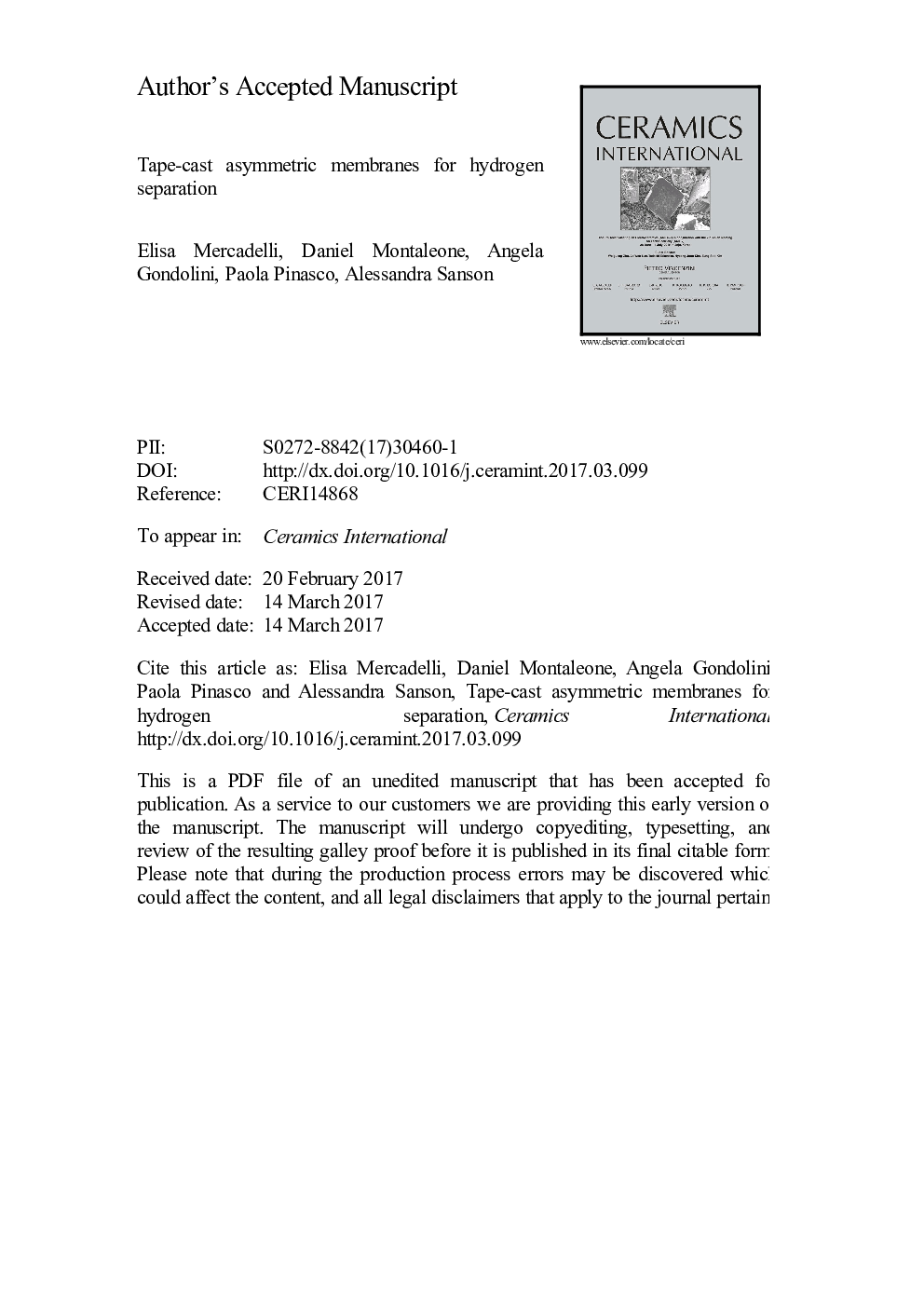| Article ID | Journal | Published Year | Pages | File Type |
|---|---|---|---|---|
| 5437715 | Ceramics International | 2017 | 25 Pages |
Abstract
Ceramic hydrogen separation membrane is a promising technology for obtaining pure hydrogen in a wide range of processes including power generation with pre-combustion CO2 capture, water-gas shift, methane reforming, etc. This work presents for the first time the production of cer-cer asymmetrical composite membranes. BaCe0.65Zr0.20Y0.15O3-δ (BCZY) supported BCZY- Gd0.2Ce0.8O2-δ (GDC) membranes were produced by tape casting. Three different sintering aid incorporation methods were investigated to enhance the final density of the BCZY-GDC layer. The optimization of the whole process leads to produce planar crack-free asymmetrical proton conductive membranes with Ã=12 mm, constituted by a porous 350 µm thick BCZY substrate with an open porosity of 48%, and a 20 µm thick gas tight BCZY-GDC layer.
Keywords
Related Topics
Physical Sciences and Engineering
Materials Science
Ceramics and Composites
Authors
Elisa Mercadelli, Daniel Montaleone, Angela Gondolini, Paola Pinasco, Alessandra Sanson,
